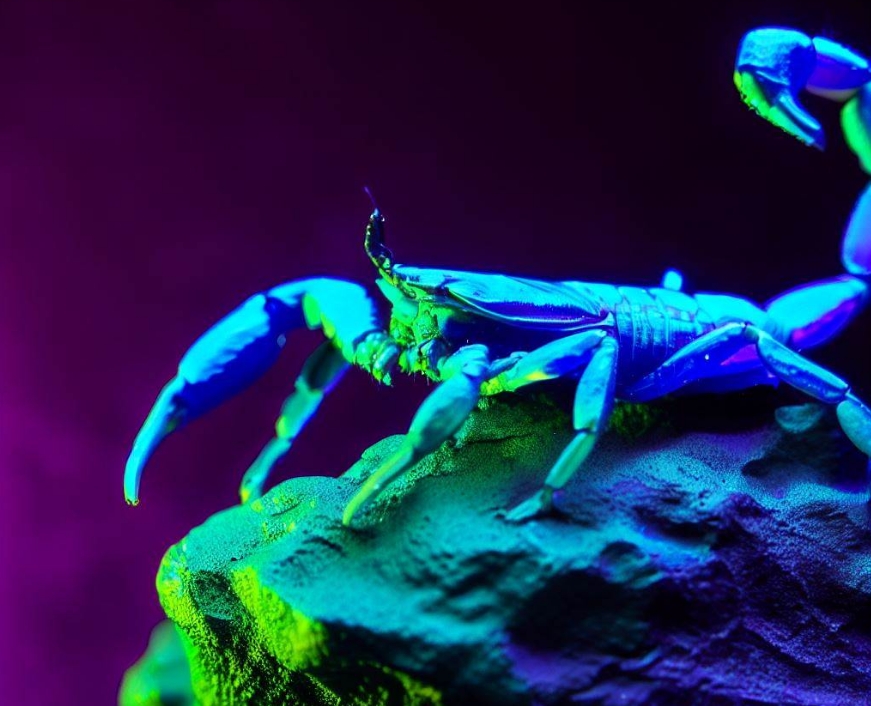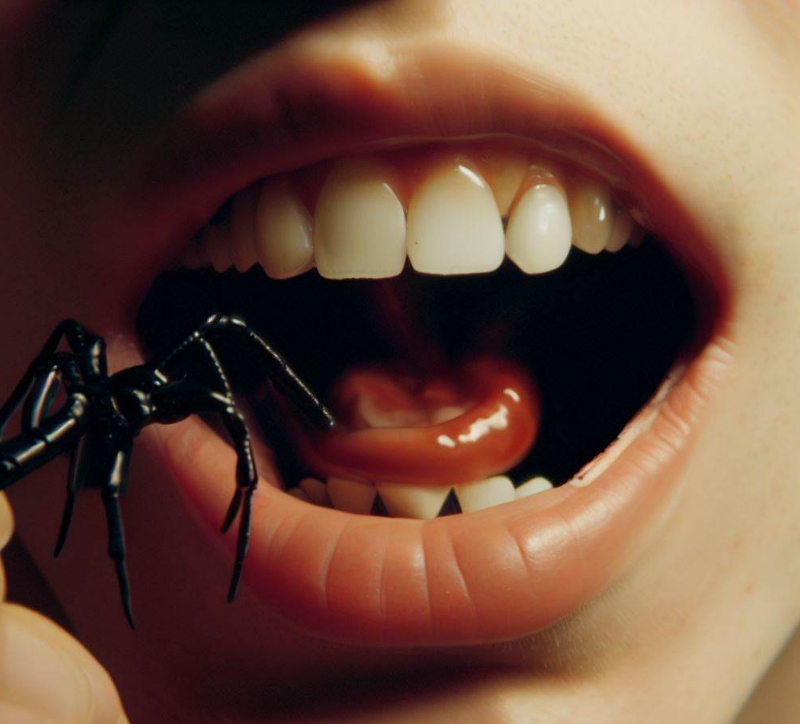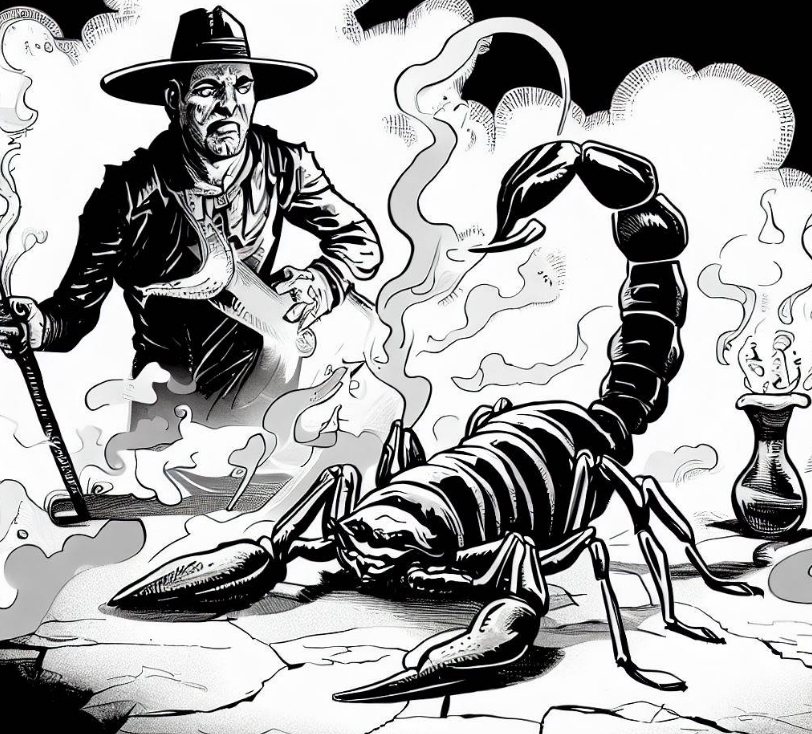Have you ever heard about the resilient yellow-tailed scorpion? Let me introduce you to this small but mighty creature. Its Latin name is Euscorpius flavicaudis. This name might not roll off your tongue easily, but once you meet this tiny scorpion with its black body and yellow-brown legs and tail, you’ll never forget it.
Southern Europe to The United Kingdom: A Journey Across Borders
Contents
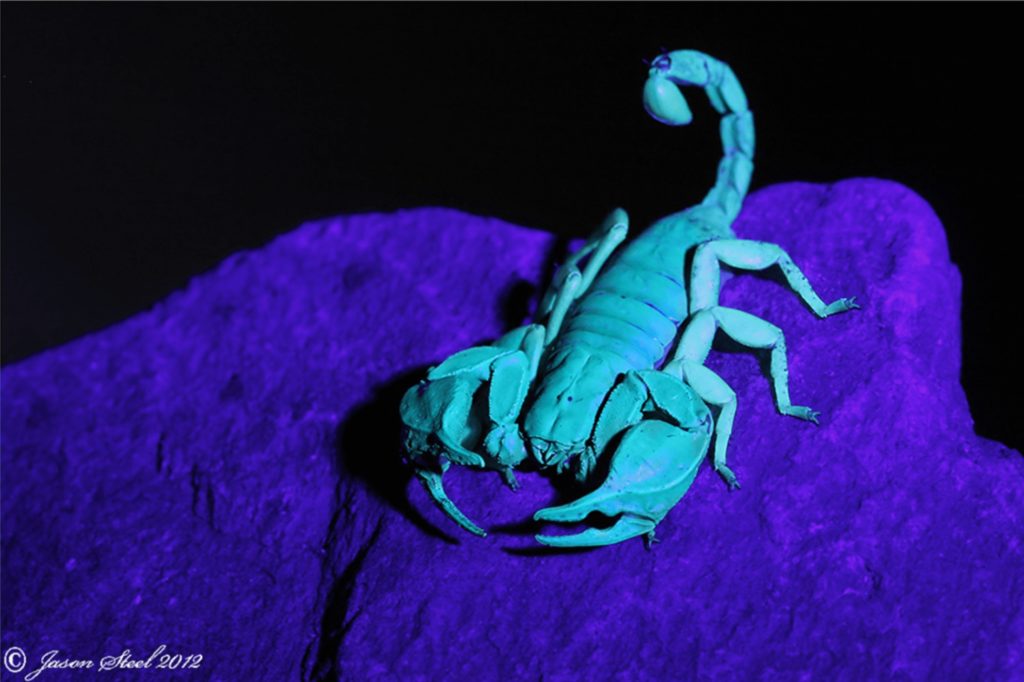
Imagine being an arachnid, natively lounging under the warm sun of Southern Europe and Northwest Africa, and suddenly finding yourself in the United Kingdom’s significantly cooler climate. Sounds like quite an adventure, doesn’t it?
This is exactly what happened to the yellow-tailed scorpion, which is thought to have hitched a ride to the UK in the early 19th century. Now, how do you think it got there? Via some Italian masonry shipment. It seems they were quite the stowaways!
What’s remarkable is not just this unexpected relocation, but the yellow-tailed scorpion’s determination to survive and thrive. These resilient little creatures managed to set up at least one thriving colony in an isolated area in Southeast England. Talk about making the best of the situation!
Population Explosion
Now, how successful was this invasion? As of 2013, the scorpion colony had grown to an impressive 10,000 to 15,000 individuals, making it the northernmost population of scorpions outside the Americas. Impressive, isn’t it?
Urban Scorpions
So, where exactly do these yellow-tailed scorpions choose to settle in these warm, temperate climates? You might imagine them in deserts or forests, right? Interestingly, these scorpions have found a niche in built-up areas. Yes, these arachnids have become urban dwellers!
Stealthy Predators
Like all scorpions, the yellow-tailed variety is a master of the ‘sit-and-wait’ strategy. Picture this: a scorpion, as still as the night, waiting patiently for its prey to come just a little closer, and then… SNAP! With a lightning-fast move, it catches and dispatches its prey using its claws. Truly a predator to be admired!
| Category | Yellow-tailed Scorpion Information |
|---|---|
| Native To | Southern Europe and Northwest Africa |
| Introduced To | United Kingdom |
| Method of Introduction | Italian masonry shipment |
| Colony Size in the UK (2013) | 10,000 to 15,000 individuals |
| Typical Habitats | Built-up areas |
| Hunting Strategy | Sit-and-wait predator |
Isn’t it amazing how life, in the form of a yellow-tailed scorpion, found a way to survive and even thrive in an environment so different from its native home? Just goes to show, whether it’s Southern Europe, Northwest Africa, or Southeast England, scorpions can make a home just about anywhere.
The Scorpion’s Anatomy: A Marvel of Evolution
The yellow tailed scorpion, like other scorpion species, is a fascinating creature with unique features that allow it to survive and thrive in diverse environments. For starters, scorpions are not insects, but rather arthropods that are closely related to spiders, ticks, and mites.
Although scorpions share some similarities with lobsters, such as their tough exoskeleton and jointed appendages, they are not closely related. Scorpions belong to the class Arachnida, while lobsters are members of the class Malacostraca.
One of the most striking aspects of scorpions is their ability to glow under ultraviolet (UV) light. When exposed to UV light, scorpions emit a bright blue-green fluorescence, which can be incredibly helpful for researchers and enthusiasts alike when trying to locate these elusive creatures in the wild.
What is the Size and Appearance of the Yellow-Tailed Scorpion?
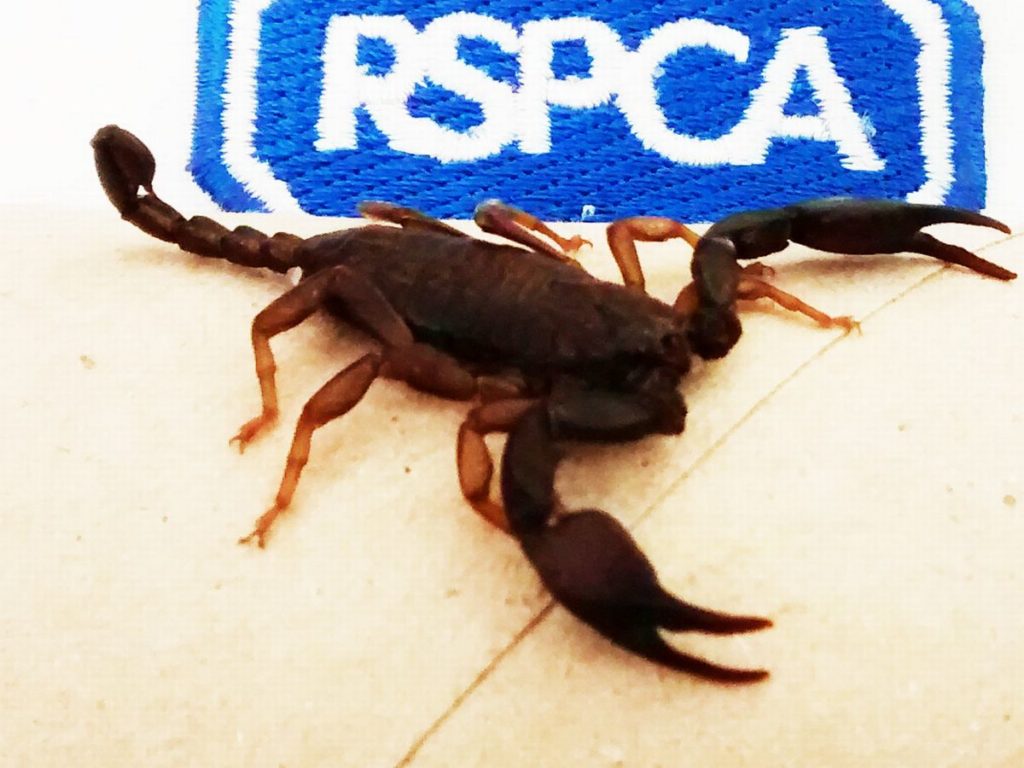
The yellow-tailed scorpion is small. Picture a common paperclip, and you’ll have an idea of its size, with adults measuring between 35-45 millimeters (1.4-1.8 inches) long. But don’t let its size fool you. This tiny creature comes fully equipped with large, strong claws, also known as pedipalps. The claws might seem disproportionately large for their bodies, but they are their main tools for catching and dispatching prey.
Adding to their distinct look is their short, thin tail. Now, doesn’t that seem unusual for a scorpion? But it’s just one more thing that sets the yellow-tailed scorpion apart.
Look closely, and you’ll spot four pairs of yellow and black striped legs. These add a dash of style to their overall appearance and make them easily identifiable.
The Fossorial Lifestyle
The yellow-tailed scorpion leads a unique lifestyle – it’s fossorial, which means it resides underground. It’s a master at finding and occupying cracks and holes in walls where the mortar pointing has crumbled away. Picture them nestled in these crevices, safe and secure from predators and the elements. Quite the savvy survivors, aren’t they?
| Traits | Yellow-Tailed Scorpion Details |
|---|---|
| Size | 35-45 millimeters (1.4-1.8 inches) |
| Color | Black body with yellow-brown legs and tail |
| Tail | Short, thin |
| Claws | Large, strong (used for catching and dispatching prey) |
| Legs | Four pairs of yellow and black striped legs |
| Lifestyle | Fossorial (lives underground) |
Characteristics and Behavior
The yellow tailed scorpion is a small species, with adults usually measuring between 25 and 45 millimeters in length. Its body color ranges from dark brown to black, while its tail and legs exhibit a yellowish hue, hence the name. This coloration helps the scorpion blend into its surroundings, making it difficult for predators to spot.
As a nocturnal creature, the yellow tailed scorpion is active primarily at night, hunting for prey such as insects, spiders, and other small arthropods. It relies on its pincers and stinger to catch and immobilize prey before consuming it. This scorpion is known to be relatively docile, and it generally avoids confrontation with larger predators or humans.
Where to Find Yellow Tailed Scorpions in the UK
Although sightings of the yellow tailed scorpion in the UK are rare, it has been observed in some specific locations. The most well-known population is found on the Isle of Sheppey in Kent, where the scorpions have established a colony in the walls of an old 18th-century fort. Other populations have been reported in areas such as Portsmouth, Southampton, and London, often in places with a history of maritime trade.
Are Yellow Tailed Scorpions Dangerous?
The good news is that the yellow tailed scorpion is not considered a significant threat to humans. While its sting can be painful, it is generally no worse than a wasp sting. In fact, the venom of the yellow tailed scorpion is relatively mild compared to that of other scorpion species. Nonetheless, caution should be exercised when encountering these creatures, as individual reactions to their venom can vary.
If you are stung by a yellow tailed scorpion, it is essential to clean the affected area with soap and water and apply a cold compress to reduce swelling. In case of severe pain, difficulty breathing, or any signs of an allergic reaction, seek medical attention immediately.
How to Observe Yellow Tailed Scorpions in the Wild
If you’re an intrepid explorer interested in observing these unique creatures in their natural habitat, there are a few tips to help increase your chances of success:
- Timing: Yellow tailed scorpions are nocturnal, so plan your search for the evening hours or after sunset.
- Location: Focus on areas with known populations, such as the Isle of Sheppey in Kent, and be prepared to explore cracks, crevices, and other hiding spots where scorpions may reside.
- Safety: Remember that these creatures can sting, so it’s essential to be cautious and respectful when observing them. Wear gloves and use a long pair of forceps or tongs if you plan to handle the scorpions.
- Equipment: Bring a UV flashlight to help locate the scorpions in the dark, as their fluorescence makes them easier to spot under UV light.
Conservation and the Future of the Yellow Tailed Scorpion in the UK
The yellow tailed scorpion’s presence in the UK raises questions about the impacts of climate change, habitat loss, and human activities on the distribution of species worldwide. While the scorpion is not currently considered endangered or threatened, its unique existence in the UK serves as a reminder of the importance of conservation efforts and monitoring the impact of human activities on ecosystems.
To help protect the yellow tailed scorpion and other native species, consider supporting local conservation organizations or participating in citizen science initiatives. By working together, we can help ensure a future where these fascinating creatures continue to thrive in their adopted homeland.
FAQs
Q: Where are yellow tailed scorpions originally from?
A: Yellow tailed scorpions are native to Mediterranean regions, including countries such as Italy, France, Spain, and Greece. They thrive in warm and dry environments, making their adaptation to the UK climate all the more remarkable.
Q: How did yellow tailed scorpions get to the UK?
A: It is believed that yellow tailed scorpions arrived in the UK by hitching a ride on cargo ships during the 18th and 19th centuries. They have since established colonies in southern parts of the country, particularly in areas with a history of maritime trade.
Q: Are yellow tailed scorpions dangerous to humans?
A: While the sting of a yellow tailed scorpion can be painful, it is generally not dangerous to humans. The venom of this species is relatively mild compared to other scorpion species. However, individual reactions to their venom can vary, so caution should be exercised when encountering these creatures.
Q: Can yellow tailed scorpions survive in cold climates?
A: Yellow tailed scorpions have demonstrated a remarkable ability to adapt to colder climates, such as those found in the UK. While they prefer warmer and drier environments, they have been able to survive in the UK due to their resilience and adaptability.
Q: What do yellow tailed scorpions eat?
A: Yellow tailed scorpions are carnivorous and feed primarily on insects, spiders, and other small arthropods. They use their pincers and stinger to catch and immobilize their prey before consuming it.
Q: How can I observe yellow tailed scorpions in the UK?
A: To observe yellow tailed scorpions in the UK, focus on areas with known populations (such as the Isle of Sheppey in Kent) and search for them during the evening hours or after sunset. Bring a UV flashlight to help locate the scorpions, as they emit a bright blue-green fluorescence under UV light. Be cautious and respectful when observing these creatures, as they can sting.
